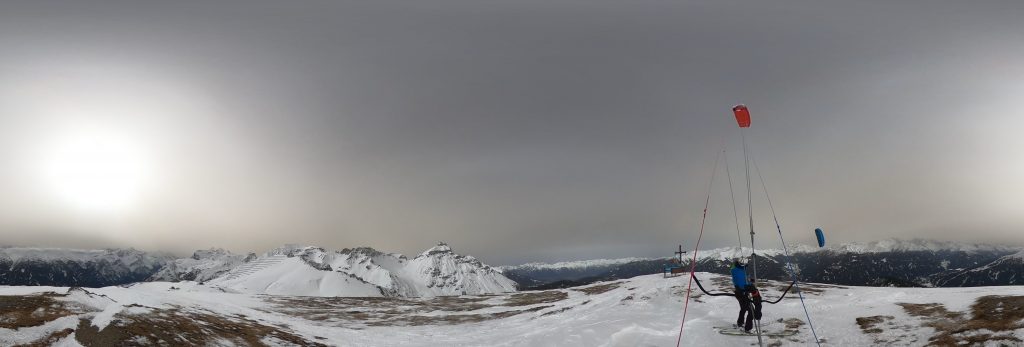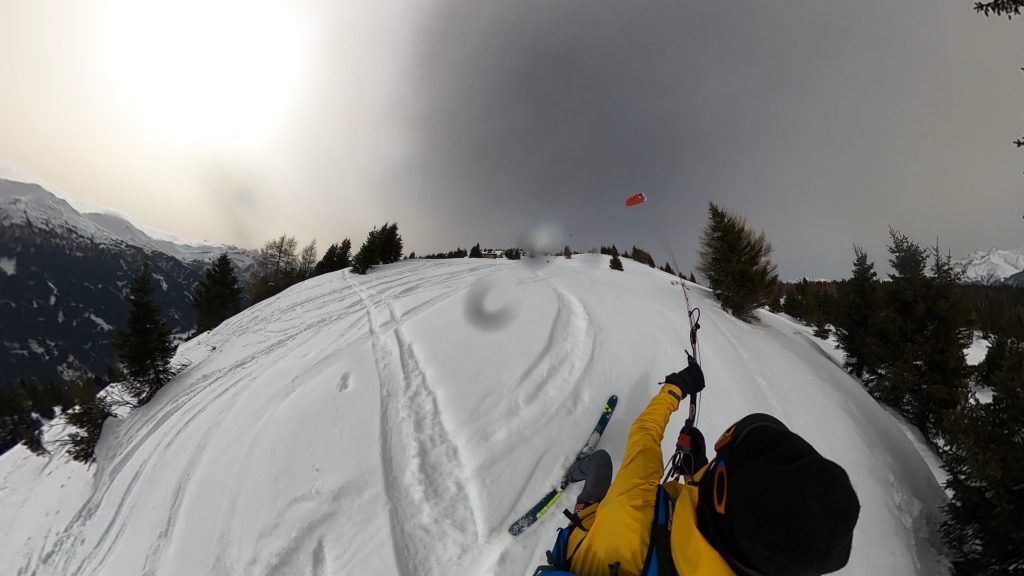Comparison Ozone Explore (v1) vs Flysurfer Peak4

If you want to go steep and high, safety is a good thing. Both the Ozone Explore and Flysurfer Peak offer great performance in the backcountry (more comparisons are also posted here and update is also posted here).
It was a great day, testing the Ozone Explore (v1) 6m2 vs the Flysurfer Peak (v4) 5m2 in the Austrian Alps. Winds on that day started at 10kn increasing to about 25kn (average), with gusts up to 40kn. The steepest part of the climb was 35°. Both kites had just enough power to get us past the 35° slope with 15kn winds, the issue being more that 15kn average winds just above tree line typically mean gusty conditions between 5kn to 20kn. Both kites had a fast response and turning radius to maneuver through and by the last couple of trees at tree line.

The following features stand out when riding up
The Ozone Explore delivers slightly more power during looping upon ascent, while the Flysurfer Peak has a much larger depower range even without using the adjuster and is trimmed such that it still allows to have some lift and do some freestyle. The large depower range also makes it absolutely safe on top of a ridge under gusty conditions. In comparison the Ozone Explore is trimmed in a way that you simply can not jump. This makes it really safe along a ridge in super gusty conditions. I have flown the Ozone Explore v1 and v2 up to 50kn before releasing. The Ozone Explore v2 allows for some vertical lift and is slightly more similar to the Peak, when it comes to jumping.
Here is a 360 video climbing a modest slope of 25° with the wind being around 10-15 kn – Turn phone or 360 dial – The Peak is coming from the back 😉
Design differences
Both kites can be completely flagged out, which is very useful when landing under extreme conditions. The Ozone Explore v1 has a higher Y on the 5th line assembly, which helps to keep the 5th line Y and the pulleys on the bridle lines apart and untangled slightly better. In addition, the secure loop on the 5th line helps to depower and land the kite in a controlled way. Yet, when completely pulling the release system, the Ozone Explore v1 tends to entangle more easily than the Flysurfer Peak4, which is a consequence of design differences and fewer flying lines connecting the bar with the kite on the Flysurfer Peak4. On the other hand the Ozone Explore v1 and v2 seem to deliver slightly more power when looping uphill. The Flysurfer Peak needs slightly more agressive maneuvers when kiting uphill on steep terrain.
In summary, both single skin kites perform great for snowkiting adventures in the backcountry, when weight and safety are a priority.
Cautionary note: Single skin kites tend to frontstall (-> video) much more easily compared to ram-pressure dual skin kites in gusty winds with rotors and wakes. Under these conditions the leading edge of a single-skin kite can collaps, which can result in very sketchy situations in high winds. My impression is that this happens more easlily for larger single skin kite sizes. But there are possibly also differences between kite designs of various manufacturers (e.g. Flysurfer and Ozone). I was able to compare a 4m2 FS Peak v5 with a 6m2 Ozone Explore v2 under identical conditions (60 km/h sustained windspeed with gusts up to 80-100 km/h). While the Ozone Explore v2 frontstalled with a collapsing leading edge multiple times, the FS Peak was still ok. To be fair, this could have also been due to the different sizes of the kites. Flying the 6m2 Ozone Explore v2 in these conditions was at its limit.
